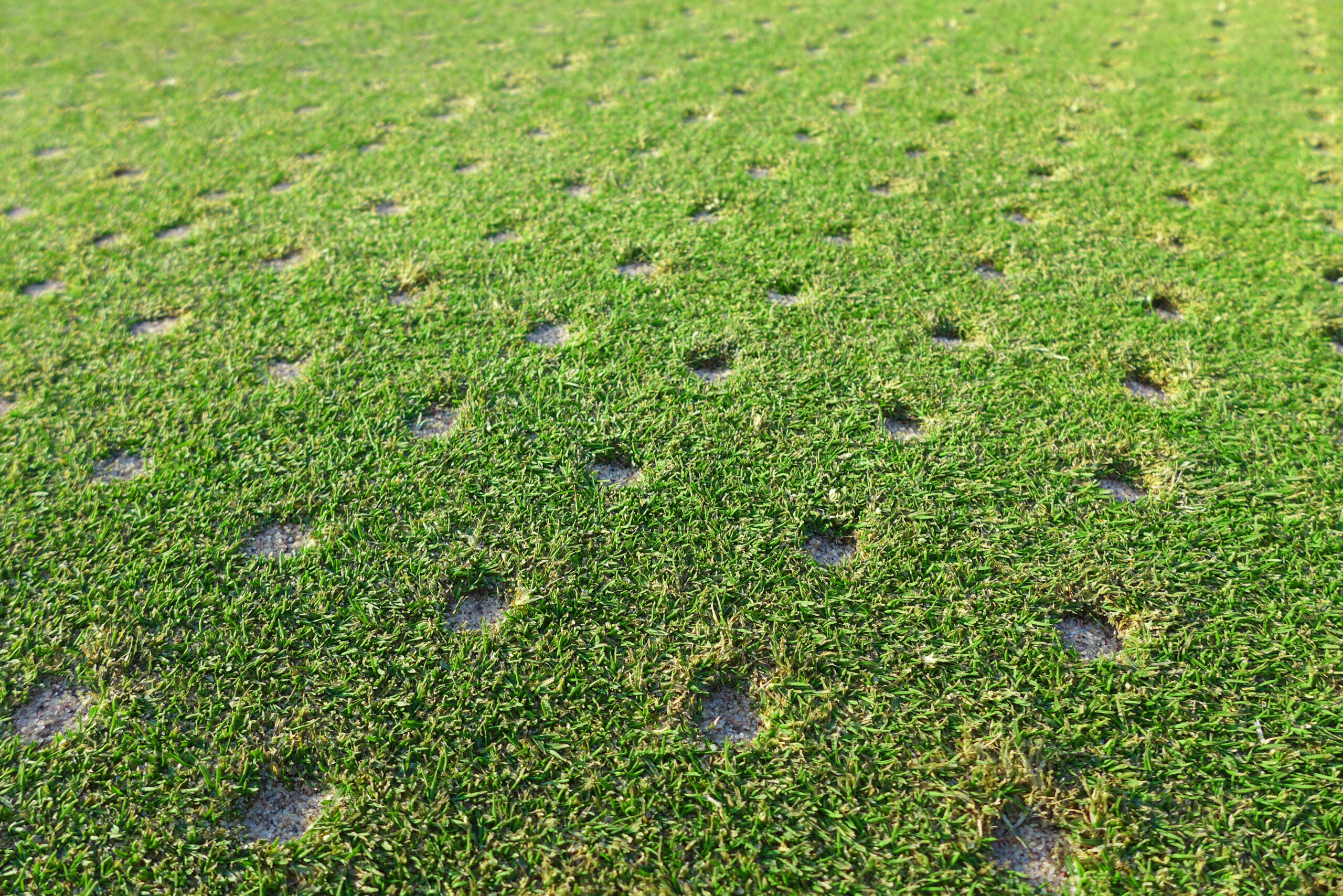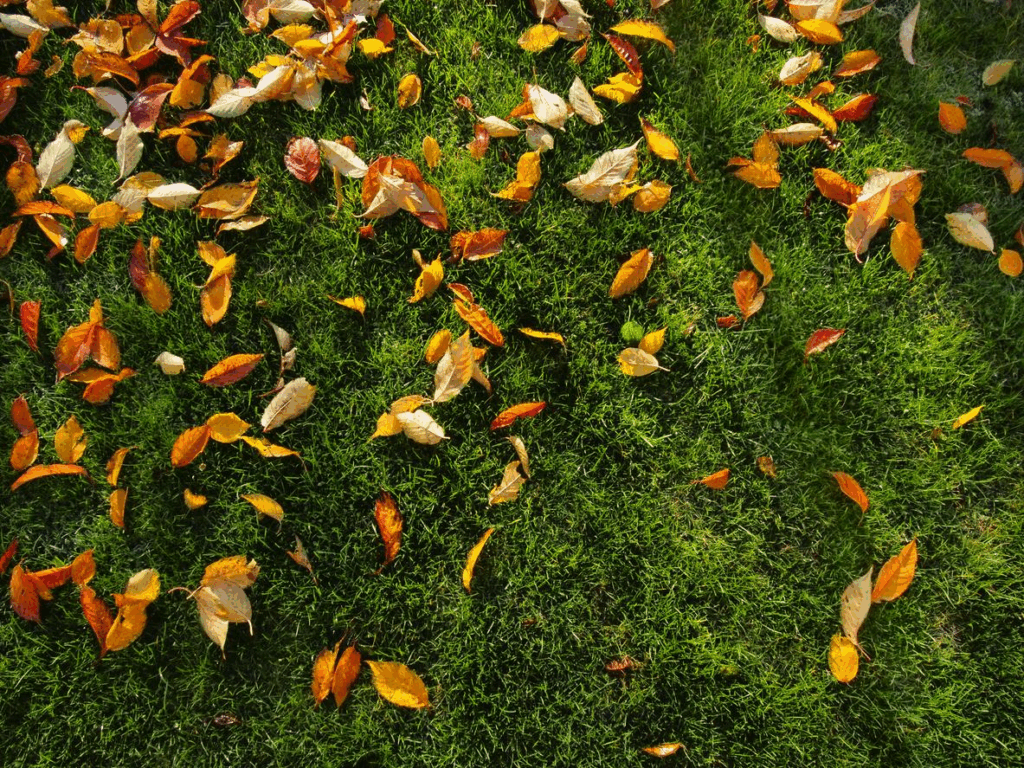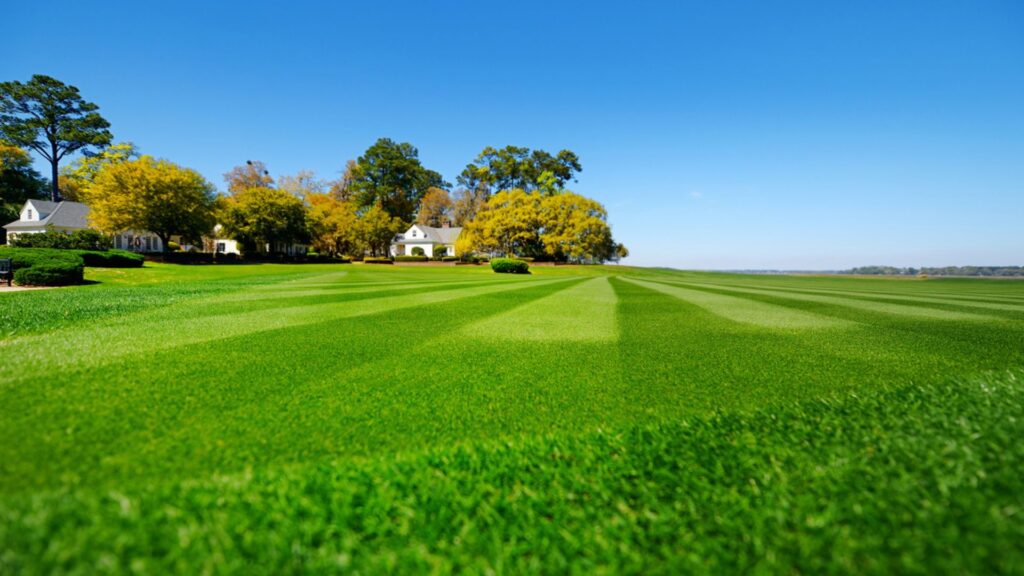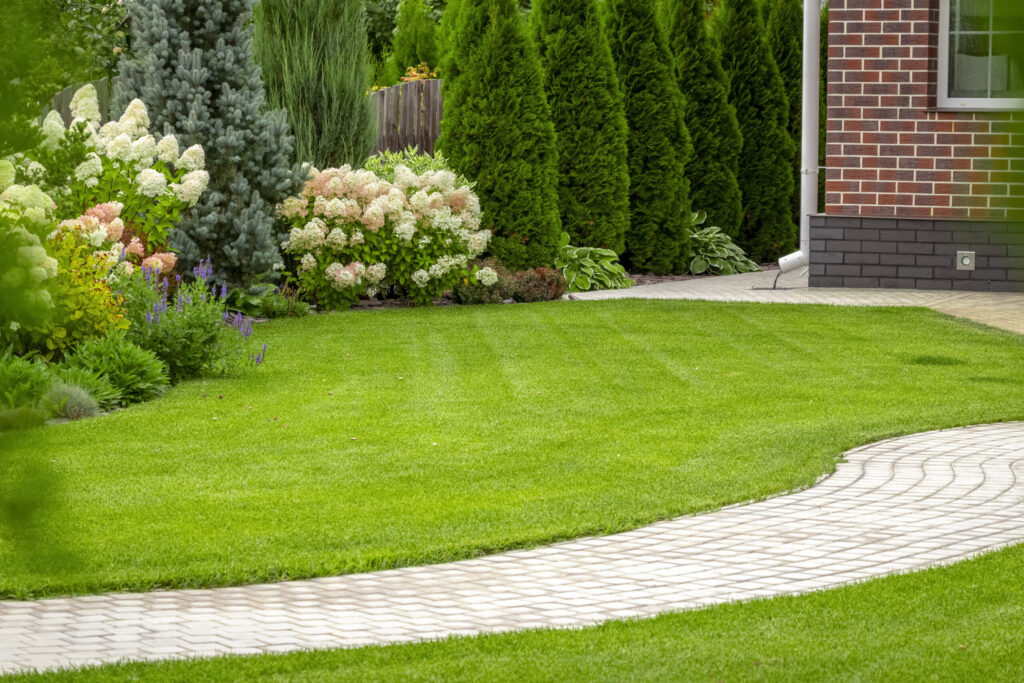Grass may look simple, but a healthy lawn needs more than just water and sunlight. As the soil gets packed down, roots struggle to grow and take in nutrients. That is where aeration comes in. By creating small openings in the soil, aeration helps air, water, and nutrients reach deep into the roots. If your lawn feels hard underfoot or struggles to stay green, compacted soil could be the culprit.
Many homeowners overlook aeration, but it is one of the best ways to keep grass thick and healthy year after year. At Lawn Squad®, we help homeowners understand when and how to aerate for the best results. Here is what you need to know to keep your lawn in top shape.
Lawn Aeration: What It Is and Why It Matters
Lawn aeration means making small holes in the soil so air, nutrients, and water can reach the grassroots. This helps roots grow deeper and makes the lawn stronger and healthier. In places where the soil gets packed down from walking and heavy clay, aeration is especially helpful.
Packed soil makes it harder for air, water, and nutrients to reach the roots, causing weak growth and thin grass. Aeration loosens the soil, helps roots spread, and makes the lawn healthier and greener.
The Best Time to Aerate Your Lawn in Bucks and Montgomery Counties
Picking the right time to aerate your lawn is important. In Bucks and Montgomery counties, most lawns have cool-season grass, which grows best in early spring and fall. Aerating during these times helps the grass heal and grow before summer heat or winter cold makes it harder to recover.
Spring aeration, typically in early to mid-spring depending on local weather, works well because the grass is starting to grow. This helps it bounce back faster and stay healthy throughout the season.
Fall aeration is also highly effective and often preferred, especially if you plan to overseed, as it provides ideal conditions for seed germination and strong root development before winter.
Signs That Your Lawn Needs Aeration
If your lawn looks uneven or thin, it might need aeration. One clear sign is hard soil. If the ground feels tough or a screwdriver does not push in easily, the roots may not have enough space to grow.
Another clue is water puddles after rain. When soil is too packed, it can’t soak up water properly. Instead of reaching the roots, the water stays on top or runs off, leaving the grass dry.
If patches of the lawn look thin or the grass doesn’t respond well to fertilizer, the soil could be too dense. When nutrients can’t reach the roots, grass growth slows. Aerating breaks up the compacted areas, allowing fertilizer and water to reach deeper into the soil where the roots can use them.
Lawns that see frequent foot traffic often benefit from aeration. Soil gets packed down from walking, playing, and mowing. Aeration loosens it, allowing the grass to grow evenly.
DIY Aeration vs Professional Services
Aeration can be done as a do-it-yourself project or by hiring a professional. Renting a core aerator from a home improvement store is one option for homeowners who want to handle the process themselves.
While this method works, it requires effort and knowledge of proper technique. Many DIY aeration attempts do not go deep enough, or they miss areas of the lawn, leading to uneven results.
Professional aeration makes sure the job is done evenly and correctly. Lawn care experts use strong machines that pull out deep soil plugs to help the grass grow better. They can also see if the lawn needs more care, such as new grass seed or fertilizer, to help it grow better.
Choosing between DIY and professional aeration depends on the lawn’s size, the severity of compaction, and the equipment available. For large lawns or heavily compacted soil, professional services often deliver better results with less hassle.
Combining Aeration with Overseeding for a Thicker Lawn
Aeration helps the soil, but overseeding makes it even better. Spreading new grass seed fills in thin areas and makes the lawn thicker. The holes from aeration let the seeds reach the soil, helping them grow well.
Spreading grass seeds immediately after aeration gives new seedlings a better environment in which to grow. The soil is already loosened, allowing roots to establish quickly. Choosing grass seeds suited to our local climate helps ensure strong, even growth.
Overseeding is especially useful for lawns that have thinned due to heat, foot traffic, or disease. Adding new grass to these spots makes the yard stronger and lessens the chance that bugs will take over. Fall is typically the best time for overseeding in our region due to ideal temperatures and less weed competition, but spring overseeding can still be beneficial with proper care. If you do both aeration and overseeding at the same time, your yard will be lusher and healthier in the coming months.
Caring for Your Lawn After Aeration
After aerating, taking care of the lawn helps it heal and grow better. Watering is the key step. Keeping the soil slightly moist allows roots to absorb nutrients and encourages new growth. If overseeding is done, watering helps the seeds sprout.
Fertilizing after aeration gives the lawn an added boost. The openings in the soil help fertilizer reach the roots more easily. Using a balanced fertilizer suited for the grass type promotes healthy growth.
Wait a little before mowing after aeration. Let the grass grow a bit longer to keep it strong. Cutting too soon can slow down its recovery.
Common Aeration Mistakes to Avoid
Aerating at the wrong time of year stresses the grass more than it helps it. Performing aeration in the heat of summer or during winter dormancy does not provide the benefits that spring and fall aeration offer.
Using the wrong type of aerator can also lead to problems. Spike aerators, which push holes into the soil without removing plugs, often make compaction worse. Core aerators, which pull small plugs from the ground, are the most effective. If the soil is too dry, aeration is harder to do. Watering first makes the ground softer so that the machine can pull out soil more easily. A slightly damp lawn helps aeration work better.
How Aeration Helps Lawns Specifically in Bucks and Montgomery Counties
Soil conditions in Bucks and Montgomery counties vary, but many lawns experience compaction due to clay-heavy soil and changing seasonal conditions. Clay soil holds moisture well but tends to become dense, making aeration an important part of lawn care.
Our local climate also affects lawn health. Weather that is too hot or too cold can be hard on grass, and compacted soil makes it harder for roots to survive these conditions. Aeration helps the lawn handle these seasonal changes by improving root access to water and nutrients.
Planning for a Healthier Lawn
Lawn aeration works best when done regularly. Aerating once a year—or twice a year for lawns with heavy clay soil or frequent use—helps grass stay healthy. Spring and fall are the best times since the lawn can heal and grow better after aeration.
Keeping a lawn calls for more than simply watering and cutting. Aeration helps the soil stay healthy, giving the grass a better foundation for growth. Regular aeration leads to a thicker, healthier lawn, whether done as a DIY project or with professional help.
Schedule Lawn Aeration Today
Aeration is one of the easiest ways to give your lawn what it needs to grow strong. Loosening compacted soil helps roots spread, improves drainage, and makes fertilizer more effective. Timing and technique matter, so knowing when and how to aerate can make all the difference.
If you’re ready to improve your lawn’s health, Lawn Squad® can help you get the job done right. We also offer lawn fertilization, weed control, lawn disease control, flea and tick control, and tree and shrub care services.
Contact us today to find out how we can keep your lawn looking great.





